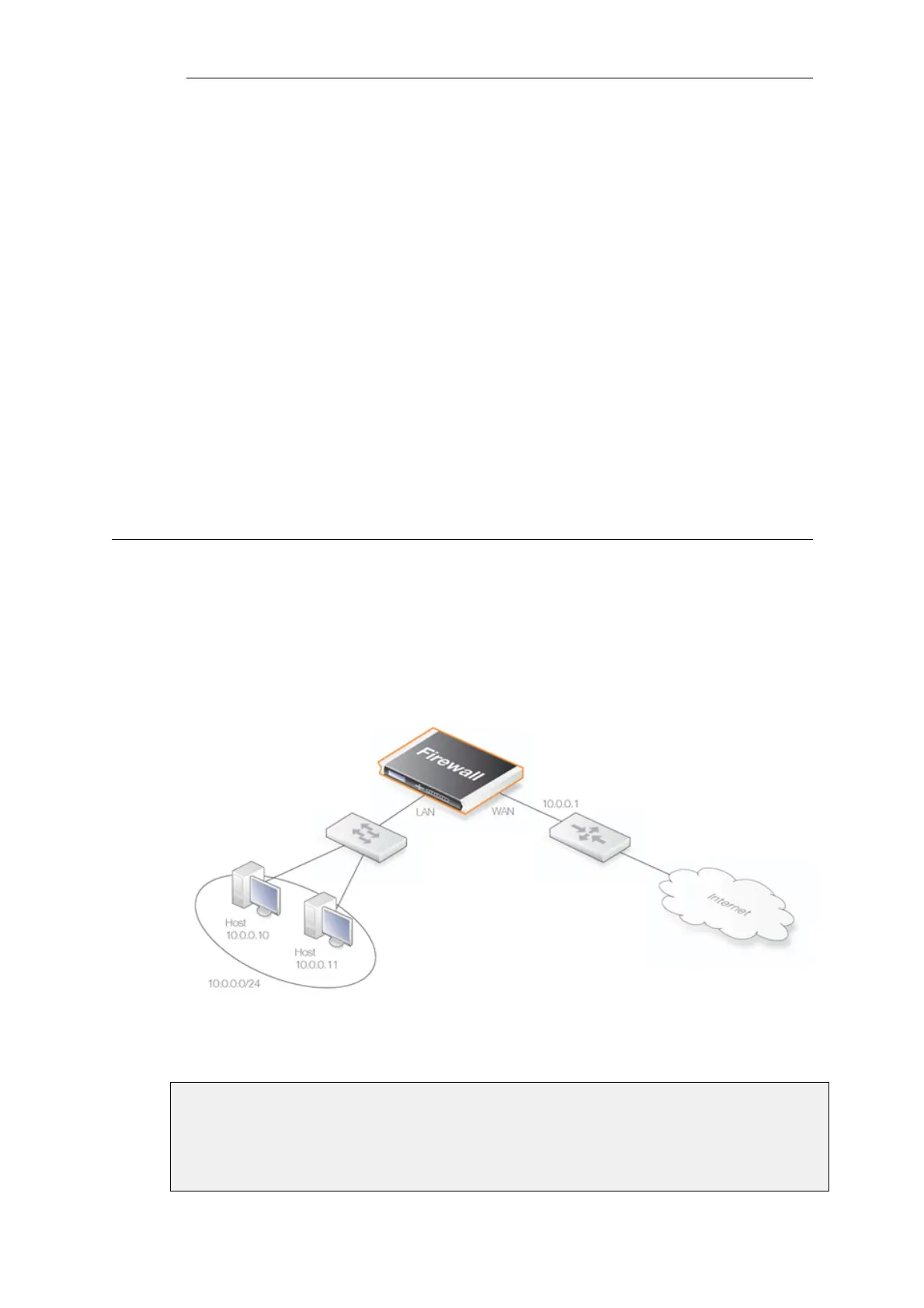through the NetDefend Firewall.
Grouping IP Addresses
It can be quicker when dealing with many IP addresses to group all the addresses into a single
group IP object and then use that object in a single defined route. In the above example,
85.12.184.39 and 194.142.215.15 could be grouped into a single object in this way.
Using NAT
NAT should not be enabled for NetDefendOS in Transparent Mode since, as explained previously,
the NetDefend Firewall is acting like a level 2 switch and address translation is done at the higher
IP OSI layer.
The other consequence of not using NAT is that IP addresses of users accessing the Internet
usually need to be public IPv4 addresses.
If NATing needs to be performed in the example above to hide individual addresses from the
Internet, it would have to be done by a device (possibly another NetDefend Firewall) between
the 192.168.10.0/24 network and the public Internet. In this case, internal, private IPv4 addresses
could be used by the users on Ethernet network pn2.
4.8.3. A Transparent Mode Use Case
In the use case illustrated below, a NetDefend Firewall in transparent mode is placed between an
Internet access router and the internal network. The router is used to share the Internet
connection with a single public IPv4 address. The internal NATed network behind the firewall is
in the 10.0.0.0/24 address space. Clients on the internal network are allowed to access the
Internet via the HTTP protocol. The actual setup steps are listed in the example below.
Figure 4.25. Transparent Mode Use Case
Example 4.22. A Transparent Mode Use Case
Command-Line Interface
Chapter 4: Routing
386

